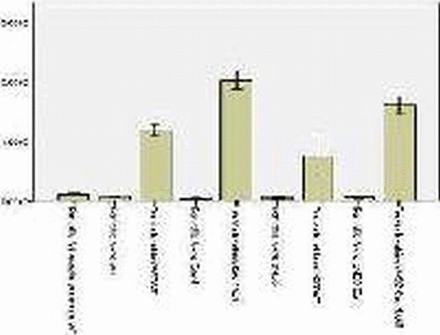-
Views
-
Cite
Cite
K. Ibrahim, M. Christoph, J. Mrosek, A. Augstein, D. Poitz, R.H. Strasser, C. Wunderlich, The local influence of the eNOS/Caveolin System on the development of atherosclerosis in a arterial transplantation model of atherosclerosis, European Heart Journal, Volume 34, Issue suppl_1, 1 August 2013, P2388, https://doi.org/10.1093/eurheartj/eht308.P2388
Close - Share Icon Share
Introduction: The regulatory mechanisms of atherosclerosis are not jet completely understood. An important regulatory mechanism seems to be the eNOS/Caveolin system. Till now it's unclear whether the local arterial wall eNOS/Caveolin system or the systemic eNOS/Caveolin system is responsible for the regulation of atherosclerotic plaque progression.
To address the question if the development of atherosclerosis is conveyed by the local arterial wall eNOS/Caveolin system a vascular transplantation model in Cav-1 (-/-)-, eNOS (-/-)- and newly bred double Cav-1/eNOS(-/-)(-/-) mice was developed.
Methods and results: The aorta of the donor mouse (C57/Bl6, Cav-1 (-/-), eNOS (-/-) and Cav/eNOS-(-/-)(-/-)) was transplanted into carotid artery of the recipient mouse (C57/Bl6). To examine the development of the atherosclerotic lesions the intima-media ratio (area of neointima divided to area of media, IMR) and lumen-vessel wall ratio (area of lumen divided to area of media and neointima, LVR) were determined. After 42 days a signifcant reduction of the IMR in eNOS (-/-) mice compared to C57/Bl6 was observed, whereas Cav-1 (-/-) mice showed significant higher IMR. Double Cav-1/eNOS(-/-)(-/-) lacked significant differences in IMR compared to WT. No significant differences in mononuclear cells were observed in the atherosclerotic lesions (figure 1).

Figure 1
Conclusion: The eNOS/Caveolin interaction plays a pivotal role in the development of atherosclerosis in a transplantation model of atherosclerosis. This vascular proliferation and atherosclerosis are conveyed by the eNOS/Caveolin system in local cells of the arterial wall. The local exclusive loss of Caveolin-1 leads to significant increase of atherosclerotic lesions, which may be reverted in the absence of eNOS.





